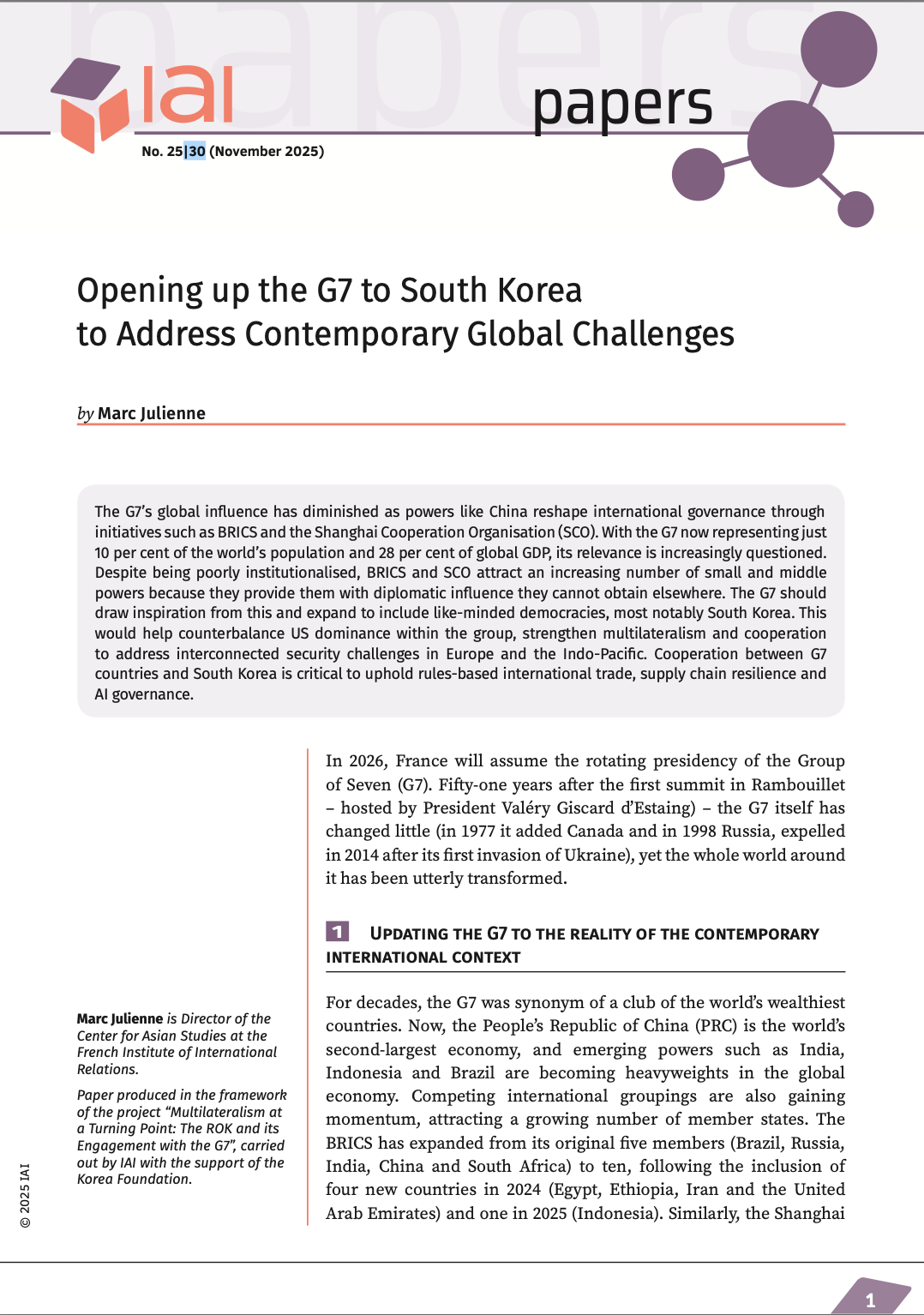Innovation Policy Challenges for Japan: An Open and Global Strategy

Productivity is increasingly important in the Japanese economy as an aging and shrinking population is expected to constrain labor input. Thus, the creation of innovation is critical for realizing economic growth and maintaining Japan's international competitiveness. Specifically, emerging countries such as China and South Korea are quickly catching up on Japan's level of technological prowess in electronics and other high-tech industries. For that reason, continual investment in R&D and provision of products and services that are competitive in the global market are crucial for Japan's international competitiveness.
As such competition heats up in the field of innovation, accelerating the speed of product development is becoming a vital issue for Japanese companies. At the same time, broadening the scope of R&D is also essential so as to keep up with increasingly complex products and systems that have developed as the result of technological advances. This paper examines the future of Japanese companies, with a particular focus on the "opening" and globalization of innovation that is critical to their international competitiveness.
This article also presents an overview of the policy challenges of the Japanese government in the area of a network-based innovation system. In Japan, the national innovation system is characterized by large companies, with substantial in-house R&D resources, dominating private R&D expenditure, while R&D collaboration between companies and universities is lacking. However, there is an increasing trend of R&D collaboration, particularly among small to medium-sized enterprises (SMEs). The Japanese government has also taken several policy actions to facilitate such open innovation activities, in the hope that they spread nationwide to include large companies.
What is vital for Japanese firms is to incorporate into their technology management both of the key elements - maintaining expansive R&D activities that do not sacrifice future growth potential through open innovation, and breaking into new growth markets through "globalization".

Available in:
Regions and themes
ISBN / ISSN
Share
Download the full analysis
This page contains only a summary of our work. If you would like to have access to all the information from our research on the subject, you can download the full version in PDF format.
Innovation Policy Challenges for Japan: An Open and Global Strategy
Related centers and programs
Discover our other research centers and programsFind out more
Discover all our analyses
Opening up the G7 to South Korea to Address Contemporary Global Challenges
The G7’s global influence has diminished as powers like China reshape international governance through initiatives such as BRICS and the Shanghai Cooperation Organisation (SCO). With the G7 now representing just 10 per cent of the world’s population and 28 per cent of global GDP, its relevance is increasingly questioned.
Expanding SPDMM as a pivotal institution in the Pacific – A French perspective
The South Pacific Defence Ministers’ Meeting (SPDMM) is the only forum that brings together defense ministers from the wider South Pacific — including Chile, which is hosting it for the first time. This heterogeneous group of countries with varying resources, capacities, and interests — Australia, Chile, Fiji, France, New Zealand, Papua New Guinea (PNG), and Tonga — are united by their shared determination to strengthen cooperation on maritime security and humanitarian assistance and disaster relief (HADR) activities.
EU’s Derisking From China: A Daunting Task
With economic security as a major concern, the EU has recently turned to “derisking” from China. The EU strategy entails reducing critical dependencies and vulnerabilities, including in EU supply chains, and diversifying where necessary, while recognizing the importance and need to maintain open channels of communication.
Sri Lanka’s NPP Government. From System Change to Structural Compliance
In September 2024, a relative outsider to Sri Lanka’s two-party-dominated political system, Anura Kumara Dissanayake, won the presidential elections. The anti-establishment, populist movement he represented, the National People’s Power (NPP), went on to receive an overwhelming mandate in the November 2024 general elections, winning 159 seats in a 225-member parliament.









